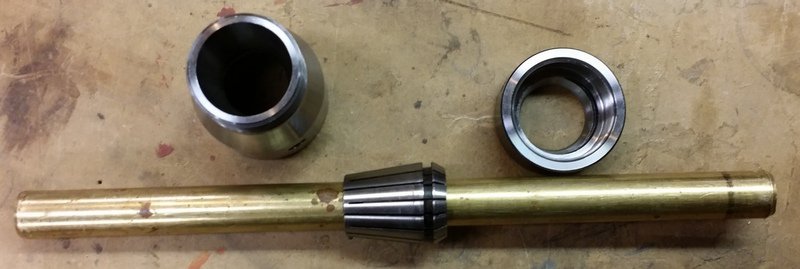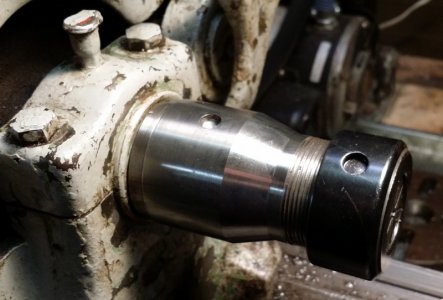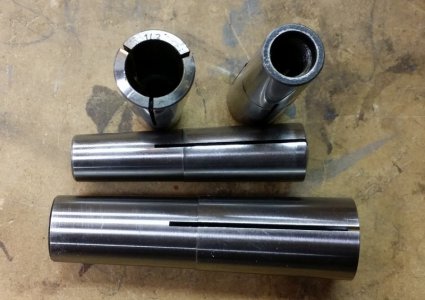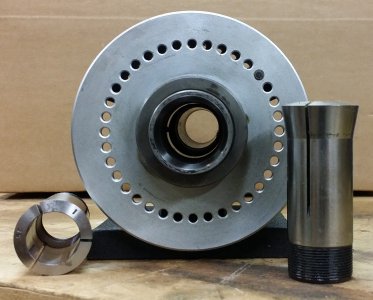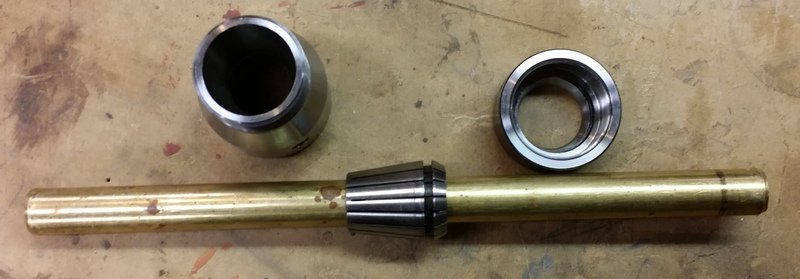Hi Savarin,
I initially read your topic and thought "what's to know; they are collets!". But then after seeing your questions, the useful answers above and having it sit in my brain a while I realize it's not that simple......there are a number of details about mounting, size ranges, use that are definitely NOT obvious.
I have never seen a detailed guide to collets. I originally just liked the advertised concentricity and repeatability and jumped in and started buying/using them. The first set I got was ER-32 for my old lathe, then some MT4 ones for my mill, then some MT3 ones for my rotary table, and then some 5C ones for an indexer....wow, they do add up! They have been very useful, and I have a few thoughts to add...
The collets that fit directly into your spindle taper should be the most accurate as the spindle taper itself was turned on the spindle centre. Any extra taper adapters, nose-thread adapters will necessarily add more room for error and decrease repeatability; you may not get them reinstalled the same way a second time.
My big mill has a Brown and Sharpe #11 taper. I cannot find tooling in that size, but was able to find a B&S#11 to MT4 taper adapter and I can use MT4 collets in that to hold end mills.
My lathe has an MT3 spindle taper and 1-1/2 x 8tpi nose. I could use MT3 collets directly in the spindle with a draw bar to tighten....but I usually don't for two reasons:
1) the holding range of the MT3 collets is limited to small diameters
2) I dislike using the threaded drawbar.....it tightens up great, but loosening it feels so stone-age! I need to tap the end of the bar to shove the collet out of the spindle taper. I put a long coupler nut on the threaded bar to spread the force over more threads and use a soft-faced hammer...but I still hate the thought of hammering on the threads.
There are special collet closers you can add to a lathe, either handwheel or lever operated, but they necessarily reduce the maximum diameter thru the spindle.
I have found ER-32 adapters for my lathe that I really like. Beall tool makes them in the USA:
http://www.bealltool.com/
http://www.bealltool.com/products/turning/colletchuck.php
They advertise them as being for wood-working; I've never used them for wood, they work great for metal.
Their set of collet sizes are limited, but the adapter is standard ER-32 so you can buy more anywhere.
They used to offer a larger set (ER-50?) as well, but I don't see it there now.......
For me the beauty of the ER-32 collets is in overcoming those two issues above:
1) I can get and use ER-32 collets in a huge range of sizes right up to the maximum thru hole of my lathe spindle!
2) the loosening....the nut has as an off-centre ring that locks into the groove on the collets. You actually have to install the collet into the nut before putting the nut/collet onto the tapered nose adapter.
http://www.bealltool.com/pdfs/collet_chuck.pdf
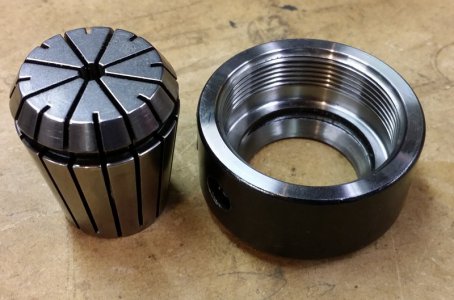
It is tightened and loosened with pin wrenches. That allows the collet to be pushed out of the taper when loosening. No hammer required!
Even though the more do-dads you add between the spindle and the collet the less accurate it gets the above have always met my needs.
However, if you start making pieces for NASA's next telescope, you may need to reconsider.......

.
Jeez...this is turning into a book...I'd better sign off.
Keep having fun!
-brino



